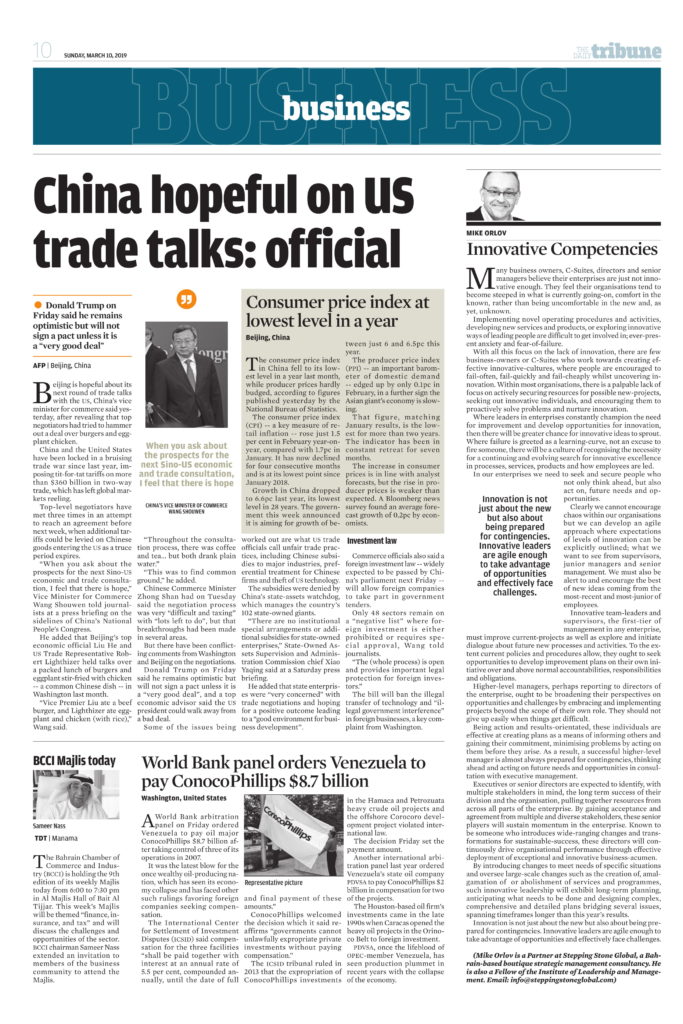
Many business owners, C-Suites, directors and senior
managers believe their enterprises are just not innovative
enough. They feel their organisations tend to
become steeped in what is currently going-on, comfort in the
known, rather than being uncomfortable in the new and, as
yet, unknown.
Implementing novel operating procedures and activities,
developing new services and products, or exploring innovative
ways of leading people are difficult to get involved in; ever-present
anxiety and fear-of-failure.
With all this focus on the lack of innovation, there are few
business-owners or C-Suites who work towards creating effective
innovative-cultures, where people are encouraged to
fail-often, fail-quickly and fail-cheaply whilst uncovering innovation.
Within most organisations, there is a palpable lack of
focus on actively securing resources for possible new-projects,
seeking out innovative individuals, and encouraging them to
proactively solve problems and nurture innovation.
Where leaders in enterprises constantly champion the need
for improvement and develop opportunities for innovation,
then there will be greater chance for innovative ideas to sprout.
Where failure is greeted as a learning-curve, not an excuse to
fire someone, there will be a culture of recognising the necessity
for a continuing and evolving search for innovative excellence
in processes, services, products and how employees are led.
In our enterprises we need to seek and secure people who
not only think ahead, but also
act on, future needs and opportunities.
Clearly we cannot encourage
chaos within our organisations
but we can develop an agile
approach where expectations
of levels of innovation can be
explicitly outlined; what we
want to see from supervisors,
junior managers and senior
management. We must also be
alert to and encourage the best
of new ideas coming from the
most-recent and most-junior of
employees.
Innovative team-leaders and
supervisors, the first-tier of
management in any enterprise,
must improve current-projects as well as explore and initiate
dialogue about future new processes and activities. To the extent
current policies and procedures allow, they ought to seek
opportunities to develop improvement plans on their own initiative
over and above normal accountabilities, responsibilities
and obligations.
Higher-level managers, perhaps reporting to directors of
the enterprise, ought to be broadening their perspectives on
opportunities and challenges by embracing and implementing
projects beyond the scope of their own role. They should not
give up easily when things get difficult.
Being action and results-orientated, these individuals are
effective at creating plans as a means of informing others and
gaining their commitment, minimising problems by acting on
them before they arise. As a result, a successful higher-level
manager is almost always prepared for contingencies, thinking
ahead and acting on future needs and opportunities in consultation
with executive management.
Executives or senior directors are expected to identify, with
multiple stakeholders in mind, the long term success of their
division and the organisation, pulling together resources from
across all parts of the enterprise. By gaining acceptance and
agreement from multiple and diverse stakeholders, these senior
players will sustain momentum in the enterprise. Known to
be someone who introduces wide-ranging changes and transformations
for sustainable-success, these directors will continuously
drive organisational performance through effective
deployment of exceptional and innovative business-acumen.
By introducing changes to meet needs of specific situations
and oversee large-scale changes such as the creation of, amalgamation
of or abolishment of services and programmes,
such innovative leadership will exhibit long-term planning,
anticipating what needs to be done and designing complex,
comprehensive and detailed plans bridging several issues,
spanning timeframes longer than this year’s results.
Innovation is not just about the new but also about being prepared
for contingencies. Innovative leaders are agile enough to
take advantage of opportunities and effectively face challenges
